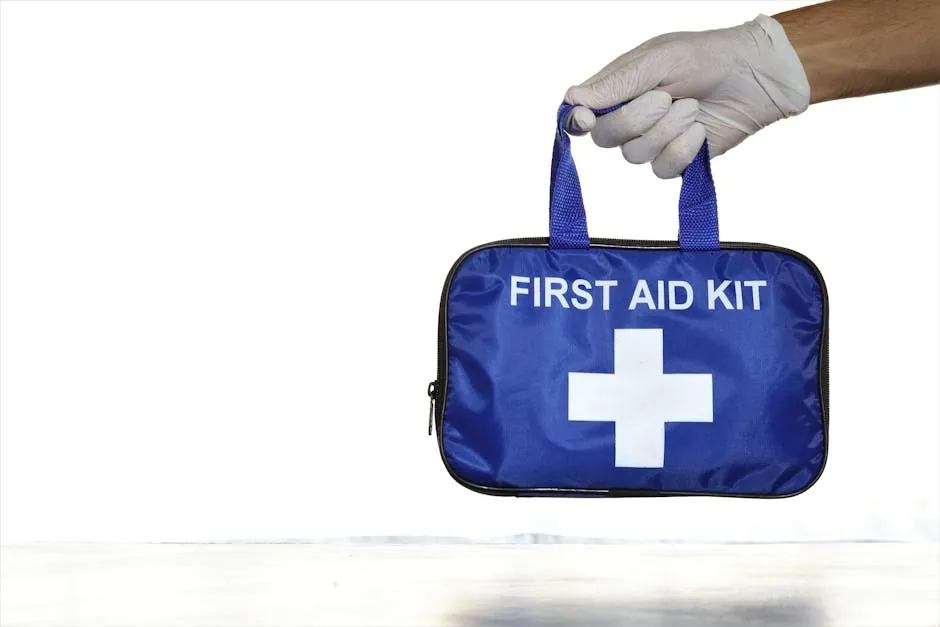
Why is My Dog Limping? Understanding Causes and Solutions
Introduction
Noticing your dog limping can be alarming. It’s a sign something might be wrong. Understanding potential causes is crucial for pet owners. Knowing when to seek veterinary care can ensure your furry friend gets the help they need. This guide will help you navigate the reasons behind your dog’s limp, providing valuable insights.
To keep your pup’s joints healthy and happy, consider integrating a Glucosamine for Dogs into their diet. This supplement can help alleviate joint pain and keep your dog active, which is especially important if they’re prone to limping.
Summary and Overview
This article aims to educate dog owners about the various causes of limping. We’ll cover how to assess the situation and determine when professional help is necessary. Limping is a common issue among dogs, but diagnosing it can be tricky since they can’t communicate their pain. Early intervention is essential to prevent complications and ensure your dog remains healthy and active.
And while you’re on this journey, make sure your dog is well-equipped for any adventure. A Dog Harness for Comfortable Walking can make those walks more enjoyable and safe, reducing the risk of injuries that could lead to limping.

Common Causes of Limping in Dogs
Understanding Limping
Limping is when your dog shows reluctance to place weight on one or more legs. It serves as an important symptom indicating discomfort or pain. Dogs may limp for a variety of reasons, from minor injuries to more serious conditions. This behavior can suggest anything from a sprain to a serious illness requiring immediate attention. Recognizing the cause is vital for effective treatment and recovery.
Types of Limping
Sudden Onset Limping
Sudden limping in dogs often signals an injury or trauma. This could occur from a fall, rough play, or even a collision. Common causes include sprains, fractures, or strains. If your dog suddenly refuses to put weight on a leg, it’s time to investigate. Check for visible signs like swelling or tenderness.
Gradual Onset Limping
Gradual limping usually indicates chronic conditions. Conditions like arthritis or hip dysplasia develop slowly over time. Older dogs often experience these issues, causing discomfort and altered walking patterns. Watch for signs such as stiffness after resting or difficulty climbing stairs. Recognizing these symptoms early helps manage your dog’s pain effectively.
To help with these gradual issues, consider a Dog Bed with Orthopedic Support. Providing a supportive sleeping area can alleviate joint pain and improve your dog’s overall comfort.

Assessing the Severity of Limping
Observing Behavior
Assessing your dog’s limp involves observing their behavior closely. First, determine if your dog can bear weight on the affected leg. Is the limp consistent or does it fluctuate? Note how long the limp lasts. If your dog vocalizes or shows reluctance to move, these could indicate a more serious issue. Pay attention to any signs of distress, such as whining or hiding.
When to Seek Veterinary Care
If your dog’s limp persists for more than 24 hours, it’s time to see a vet. Immediate attention is necessary if you notice severe symptoms. Signs like visible swelling, inability to bear weight, or a dangling limb require urgent care. Don’t hesitate to consult your veterinarian if you’re unsure about the severity of your dog’s condition.
As you monitor your dog’s health, having a Pet First Aid Kit handy is always a good idea. It prepares you for any unforeseen accidents and ensures you can provide immediate care if needed.

Common Injuries Leading to Limping
Paw Injuries
Paw injuries are frequent culprits of limping. Foreign objects like thorns or glass can become lodged in your dog’s paw. Cuts and torn nails may also cause discomfort. Look for signs of injury, such as excessive licking or swelling. If you suspect a paw injury, gently clean the area and keep your dog calm. Contact your vet if the injury appears serious or doesn’t improve within a day.
Joint and Bone Conditions
Arthritis
Arthritis is a common reason dogs limp, especially older ones. It causes joint inflammation, leading to pain and stiffness. You might notice your dog hesitating to jump or play. Managing arthritis starts with a vet diagnosis. They may suggest weight management, joint supplements, or anti-inflammatory medications. Regular, gentle exercise can also help maintain mobility.
For additional joint support, consider a Dog Cooling Mat. It can help soothe aching joints during warm days, making your furry friend much more comfortable.

Hip Dysplasia and Luxating Patella
Hip dysplasia occurs when the hip joint doesn’t fit properly, causing pain and limping. This condition is often hereditary, affecting larger breeds. Luxating patella, more common in smaller breeds, happens when the kneecap dislocates. Both conditions hinder movement and comfort. Early detection is key for effective management, so consult your veterinarian if you suspect these issues.
Muscle and Ligament Injuries
Strains, sprains, and tears are common muscle or ligament injuries leading to limping. They often occur during play or intense activity. Signs include swelling, tenderness, or reluctance to move. To prevent these injuries, ensure your dog warms up before vigorous exercise. If an injury occurs, rest is crucial. Monitor your dog’s recovery closely, and consult a vet if symptoms persist or worsen.

Medical Treatment
If your dog is limping, proper medical treatment is vital. The exact treatment depends on the diagnosis made by your veterinarian. Common options include medications, surgery, and physical therapy.
Medications often involve anti-inflammatory drugs or pain relievers. These can help reduce discomfort and swelling, allowing your dog to move more freely. Your vet may recommend joint supplements, like glucosamine, to support recovery.
In cases of severe injuries or conditions, surgery might be necessary. Procedures can range from correcting dislocated joints to repairing torn ligaments. Recovery times vary depending on the type of surgery performed.
Physical therapy can also play a crucial role in your dog’s rehabilitation. Techniques like hydrotherapy or gentle exercises can help regain strength and mobility. Always follow your vet’s recommendations closely. Doing so ensures the best chance for a smooth recovery and minimizes the risk of further complications.

Prevention Strategies
Maintaining Dog Health
Regular veterinary check-ups are essential for maintaining your dog’s health. These visits help catch potential issues early. Keeping your dog at a healthy weight reduces stress on their joints.
Encourage safe play practices to prevent injuries. Avoid rough play that might lead to accidents. Additionally, consider joint supplements to promote overall joint health, especially for older dogs.
By prioritizing your dog’s well-being, you can help prevent conditions that lead to limping. A proactive approach ensures your furry friend stays happy and active. And for those long hikes, a Dog Backpack for Hiking can help your pup carry their own supplies, keeping them engaged and active.

Conclusion
In summary, addressing your dog’s limping promptly is crucial. Understanding potential causes and getting timely veterinary care can make a significant difference. Always be proactive about your dog’s health and watch for any changes in their behavior. If you notice persistent limping, don’t hesitate to consult your vet. Monitoring your dog’s condition regularly allows for timely intervention, promoting a healthier, happier life for your canine companion.
Frequently Asked Questions (FAQs)
What does it mean if my dog is limping but shows no signs of pain?
Just because your dog isn’t vocalizing doesn’t mean they aren’t in discomfort. Limping can indicate underlying issues that aren’t immediately visible. Conditions like minor sprains or foreign objects lodged in their paw can cause limping without evident pain. Additionally, nerve or joint problems may exist without overt signs. Always observe your dog’s behavior closely. If limping persists, a vet visit is wise for a thorough check.
Can I give my dog aspirin for a limp?
No, giving aspirin to dogs can be dangerous. Human medications can cause severe side effects, including stomach ulcers or bleeding. Dogs metabolize drugs differently than humans. It’s essential to consult your veterinarian before administering any medication. They can recommend safe pain relief tailored to your dog’s needs. Remember, your veterinarian is the best resource for managing your dog’s health.
Why is my dog limping suddenly?
Sudden limping can stem from various causes, including injuries, sprains, or fractures. It might also result from conditions like ligament tears or muscle strains. If your dog was active before limping began, an accident or impact may be to blame. Other health issues, such as infections or diseases, can also cause sudden discomfort. Observing your dog’s behavior and seeking veterinary advice is crucial for accurate diagnosis and treatment.
What should I do if my dog’s limp worsens?
If your dog’s limp worsens, monitor their behavior closely. Look for signs of distress, such as whining or reluctance to move. Check for swelling, heat, or visible injuries on the affected leg. If you notice any concerning symptoms, contact your veterinarian immediately. Early intervention can prevent complications and ensure proper care. Don’t hesitate to seek help if you’re unsure about your dog’s condition.
How can I help my dog recover from limping at home?
Rest is key to recovery. Limit your dog’s activity to prevent further injury. Provide a comfortable space for them to relax. You can apply ice packs to reduce swelling and inflammation. Observe their condition over the next 24 to 48 hours. If the limp persists or worsens, consult your veterinarian. Also, look out for signs that may require professional care, such as increased pain or difficulty moving.
Please let us know what you think about our content by leaving a comment down below!
Thank you for reading till here 🙂
If you’re concerned about your dog’s limping, understanding why your dog is limping can help you determine the best course of action.
All images from Pexels




